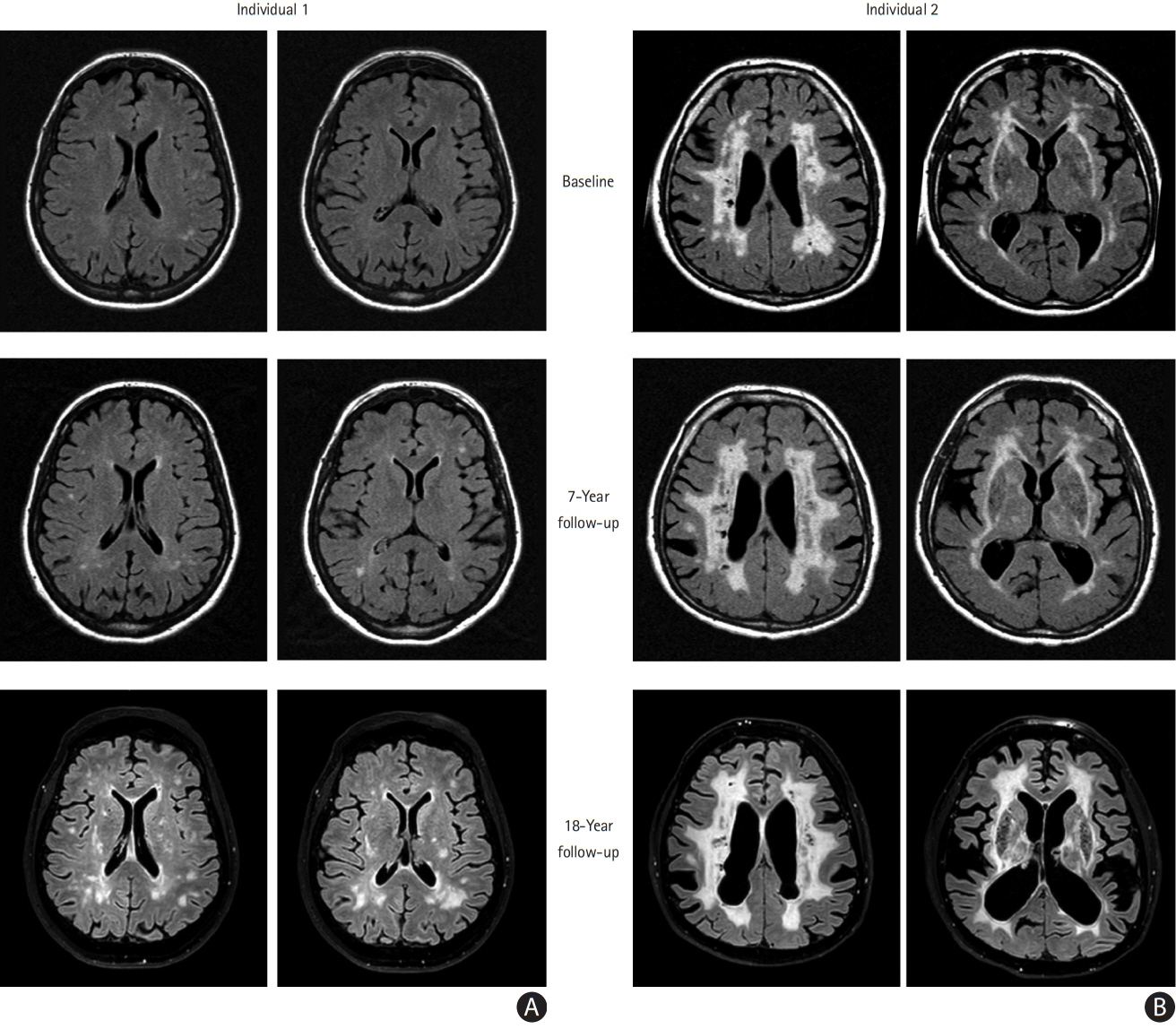J Stroke.
2021 Jan;23(1):132-134. 10.5853/jos.2020.04112.
Eighteen-Year Disease Progression and Survival in CADASIL
- Affiliations
-
- 1Department of Clinical Genetics, Leiden University Medical Center, Leiden, the Netherlands
- 2Department of Radiology, Leiden University Medical Center, Leiden, the Netherlands
- 3Department of Neurology, Leiden University Medical Center, Leiden, the Netherlands
- 4Institute of Psychology, Health, Medical and Neuropsychology Unit, Leiden University, Leiden, the Netherlands
- 5Department of Biomedical Data Sciences, Leiden University Medical Center, Leiden, the Netherlands
- 6Department of Human Genetics, Leiden University Medical Center, Leiden, the Netherlands
- KMID: 2512363
- DOI: http://doi.org/10.5853/jos.2020.04112
Figure
Reference
-
References
1. Rutten JW, Van Eijsden BJ, Duering M, Jouvent E, Opherk C, Pantoni L, et al. The effect of NOTCH3 pathogenic variant position on CADASIL disease severity: NOTCH3 EGFr 1-6 pathogenic variant are associated with a more severe phenotype and lower survival compared with EGFr 7-34 pathogenic variant. Genet Med. 2019; 21:676–682.
Article2. Adib-Samii P, Brice G, Martin RJ, Markus HS. Clinical spectrum of CADASIL and the effect of cardiovascular risk factors on phenotype: study in 200 consecutively recruited individuals. Stroke. 2010; 41:630–634.3. van den Boom R, Lesnik Oberstein SA, Ferrari MD, Haan J, van Buchem MA. Cerebral autosomal dominant arteriopathy with subcortical infarcts and leukoencephalopathy: MR imaging findings at different ages. 3rd-6th decades. Radiology. 2003; 229:683–690.4. Jouvent E, Duchesnay E, Hadj-Selem F, De Guio F, Mangin JF, Hervé D, et al. Prediction of 3-year clinical course in CADASIL. Neurology. 2016; 87:1787–1795.
Article
- Full Text Links
- Actions
-
Cited
- CITED
-
- Close
- Share
- Similar articles
-
- Anesthetic management of a patient with CADASIL syndrome: A case report
- Amyotrophic Lateral Sclerosis Associated With CADASIL
- A Case of CADASIL (Cerebral Autosomal Dominant Arteriopathy with Subcortical Infarcts and Leukoencephalopathy) Diagnosed by Skin Biopsy
- A case of mild CADASIL patient with a novel heterozygous NOTCH3 variant
- Neuroimaging Characteristics of Cerebral Autosomal Dominant Arteriopathy with Subcortical Infarcts and Leukoencephalopathy (CADASIL) in Korean Based on Jeju Cohort: A Pictorial Essay


